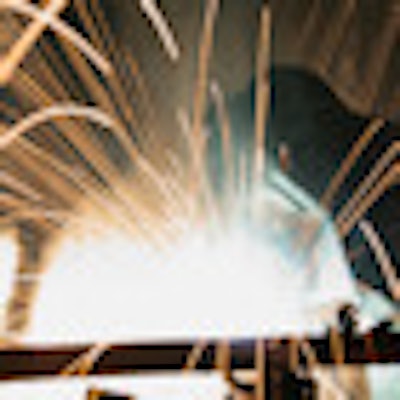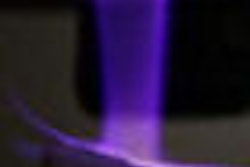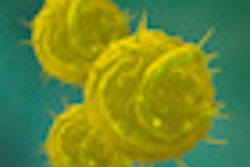
Plasma jets can disinfect dentin and might serve as a good alternative to chemicals or ozone on tooth preparations, researchers reported last week in the Journal of Medical Microbiology (February 2010, Vol. 59: 2, pp. 206-212). A press release from the journal's publisher, the Society for General Microbiology, immediately stimulated hyperbole, such as a headline on Softpedia that proclaimed "Good News: Dentist's Drill Will Be Replaced by Plasma Jets: Innovations will make this possible shortly."
Unlike lasers or handpieces, however, the plasma jets in the study do not cut or ablate tissue and could not be used to shape a tooth preparation. Also, the technology has not yet been cleared by the FDA for any clinical use in the U.S.
Still, plasma jets offer intriguing possibilities, said John Goree, Ph.D., a University of Iowa physics professor who has also published research on their use in dentistry.
Unlike chlorhexidine, sodium hypochlorite, or even ozone, plasma dissipates almost immediately after disinfection, so it doesn't leave any unpleasant taste or smell, he said. "Wouldn't it be nice to create something that vanishes and can do no harm?" he asked.
How it works
Plasma is sometimes referred to as a "fourth state of matter." Just as adding energy to a solid can produce a liquid and adding energy to a liquid can produce gas, adding energy to a gas can produce plasma by ionizing molecules. Plasma is created when you turn on a fluorescent light bulb or a welder's arc.
In the light bulb, the heat is kept reasonably low because the tube holds the gas at a low pressure. Over the past decade, researchers have figured out how to generate plasma jets at low temperatures without needing the low pressure. In these techniques, bombarding oxygen and nitrogen with electrons creates plasma containing not only ions but also radicals such as hydroxyl and oxygen that can kill bacteria. These discoveries have stimulated engineers to look for ways of using plasma jets for the purpose of disinfection in medicine and dentistry.
The experiment
In the Journal of Medical Microbiology study, researchers from Saarland University, the Leibniz Institute for Surface Modification, and the Fraunhofer Institute found they could reduce the bacteria on dentin 1,000 to 10,000 fold, a result similar to what they obtained using chlorhexidine.
— Journal of Medical Microbiology
They cultivated four types of bacteria known to cause problems on human teeth: E. coli, L. casei, S. mutans, and E. albicans. They put these organisms on dentin slices, then used microwaves to ionize a mixture of helium, oxygen, and nitrogen, creating plasma jets with which they irradiated the dentin for various lengths of time.
As controls, they also tried leaving some similarly contaminated dentin slices untreated, sprayed some with the gases without ionizing the gases, and treated others with chlorhexidine.
They counted over 100,000 colony-forming units of the various organisms on the untreated dentin, and 10,000 to 100,000 on the dentin sprayed with gas that had not been ionized. The chlorhexidine completely wiped out the C. abicans and reduced the E. coli, L. casei and S. mutans below a count of 100.
The plasma seemed to produce results similar to the chlorhexidine. After irradiating the dentin with plasma jets for 0.6 seconds per mm2, the researchers counted a mean of about 10 E. coli, L. casei, and C. albicans colony-forming units. S. mutans proved tougher, possibly because it is a smaller organism that might more easily have slipped into the dentin tubules. Even after 0.9 seconds per mm2, the researchers could only get the number down to 100.
The researchers might have killed even more bacteria by exposing the dentin longer, but they were afraid of heating the dentin slices to temperatures that might have damaged living teeth. In fact, they couldn't be sure whether the irradiated bacteria died because of the radicals or the heat.
They found that irradiating the dentin with the plasma jets heated the dentin up to 50.8 degrees C within five seconds. By moving the plasma jet, they could lower the heat to a range of 39 to 44 degrees C.
Clinical applications
Whether subjecting a living tooth to even that much plasma can damage it remains to be studied, said Goree. It's also unclear whether soft tissue nearby could be harmed and whether the plasma can be equally effective used on bacteria in biofilms. But if it works as well clinically as it has in laboratory studies, Goree thinks plasma jets offer an advantage over chemical disinfectants because the plasma disappears so quickly.
Besides tooth preparations, plasma jets might also be useful in periodontal treatments, he said. Other researchers have tried it for sterilizing equipment.
"The technology offers the benefits that were expected from ozone treatment but that so far have not been proven," the Journal of Medical Microbiology study authors wrote. "In particular, the disinfection of infected dentin after caries removal or of shallow root caries lesions by plasma-jet treatment might be an interesting option."



















